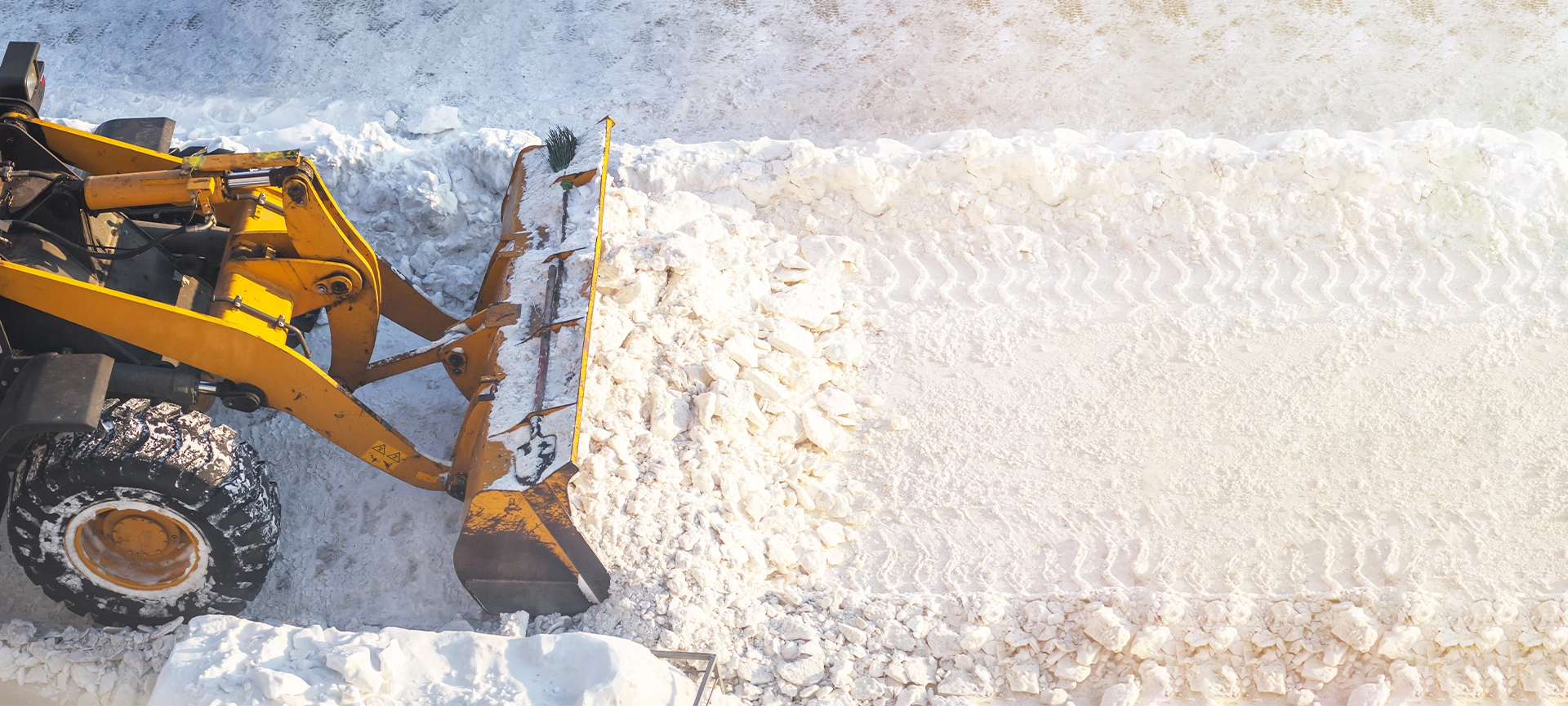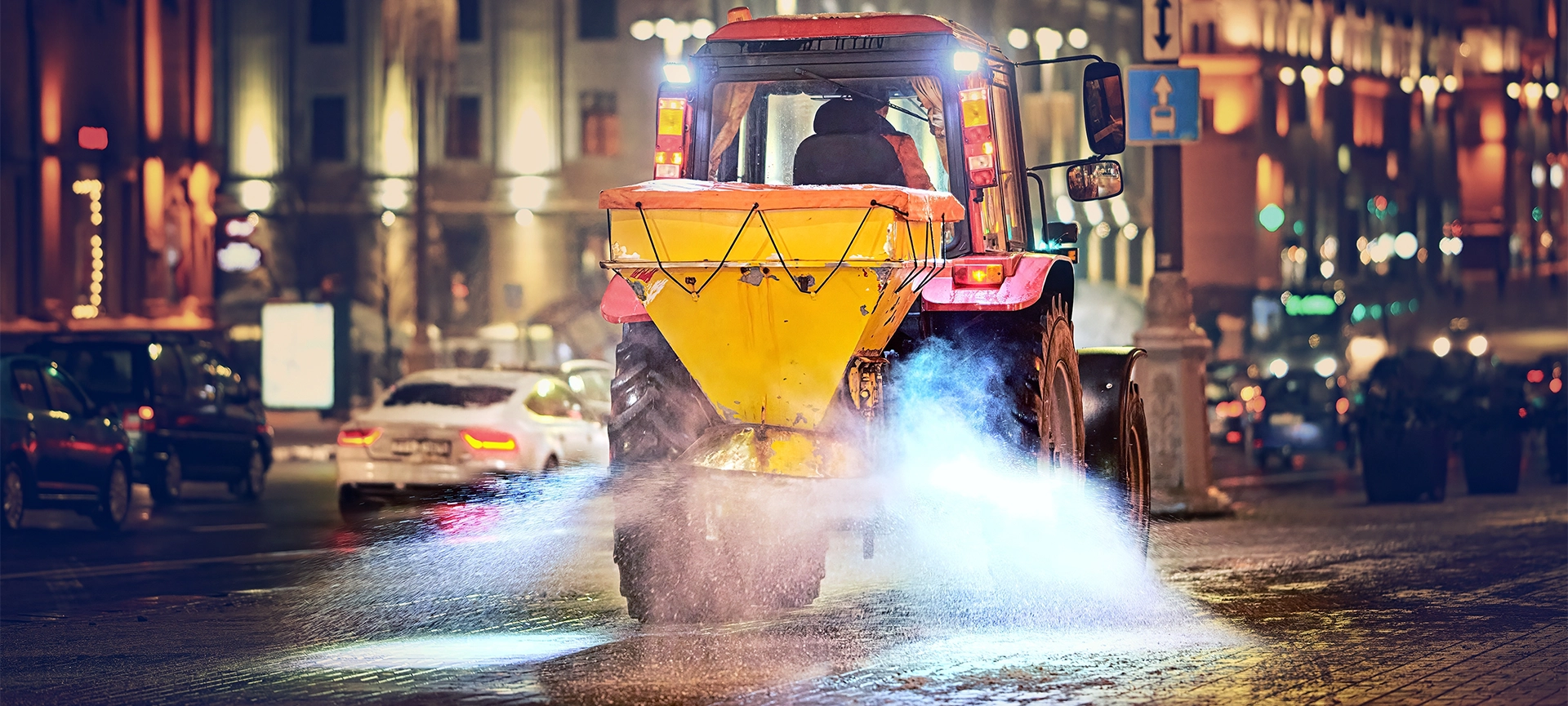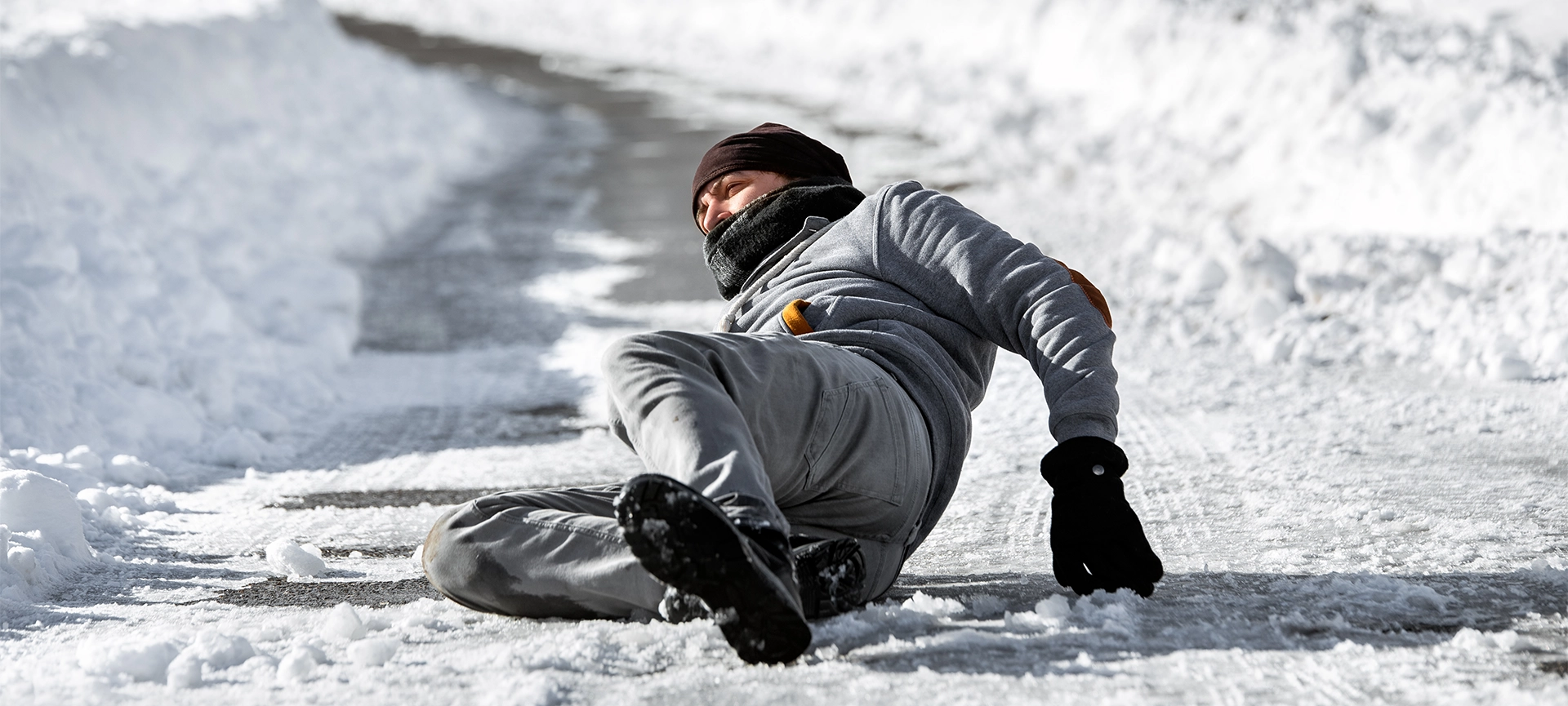
Winter in Canada brings snow, ice, and freezing rain that quickly turn walkways into hazards. For commercial property owners, failing to address these risks is more than an inconvenience; it can result in serious liability if someone slips and falls.
Understanding who is responsible for keeping commercial walkways safe is critical for protecting employees, visitors, and the business itself.
Why Liability Matters
Slip-and-fall accidents are among the most common winter-related claims in Ontario. They can lead to costly medical bills, lost wages, and even long-term disability.
If the accident occurs on a commercial property, the injured party may seek compensation through a personal injury claim. Whether the property owner, manager, or contractor is held accountable depends on how well snow and ice hazards were managed.
Related Article: Why Your Condo Association Needs a Professional Snow Removal Plan This Winter
Legal Duty of Care in Ontario
Under Ontario’s Occupiers’ Liability Act, commercial property owners and managers have a legal duty to keep their premises reasonably safe. This includes entrances, sidewalks, loading zones, and parking lots. The duty extends to anyone who enters the property — employees, customers, delivery drivers, and visitors.
The law does not require perfection, but it does expect proactive and consistent maintenance. That means walkways must be salted, sanded, and cleared in a timely manner after snow or freezing rain. Failing to act reasonably can result in liability if someone is injured.
Who Can Be Held Responsible?
Liability for ice accidents often depends on the specific circumstances. The following parties may share or carry responsibility:
1. Property Owners
Owners of commercial properties carry primary responsibility for maintaining safe conditions. If a walkway is left untreated and a slip occurs, the owner is often the first party named in a claim. Courts typically look at whether the owner had a plan in place and acted promptly after winter weather events.
2. Property Managers
If a property is leased, the manager or tenant may assume responsibility depending on the lease agreement. For example, retail tenants often handle sidewalk maintenance outside their storefront. A failure to salt or shovel properly can shift liability to them rather than the property owner.
3. Contractors
Many businesses hire snow and ice removal contractors to handle winter maintenance. In this case, the contract terms are critical. If the contractor failed to perform services as agreed, liability may extend to them. However, property owners cannot fully transfer their legal duty; they must ensure the contractor is reliable and performing adequately.
4. Municipalities
In rare cases, if a commercial property abuts a public sidewalk, responsibility may fall partly on the municipality. Local bylaws often require property owners to clear adjacent sidewalks, but if the municipality neglects its own responsibilities, it could be named in a claim.
Related Article: Top 7 Mistakes Businesses Make with Snow and Ice Management
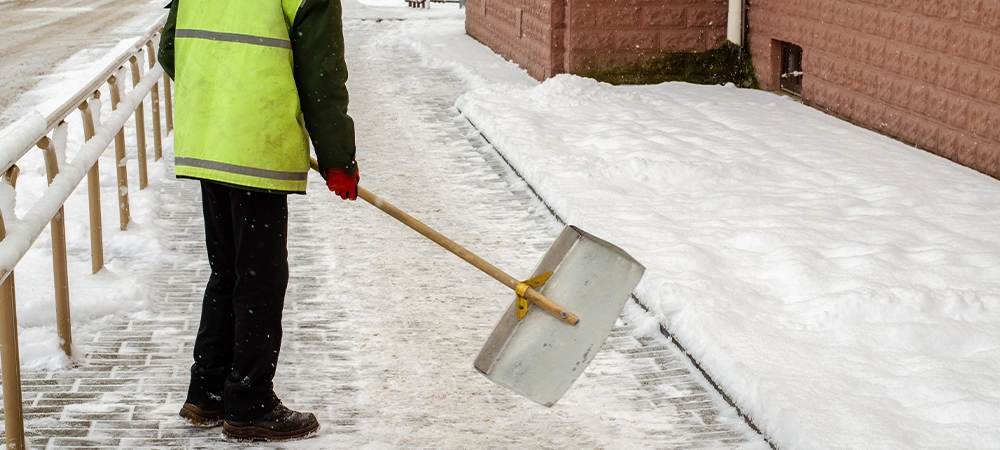
How Courts Decide Liability
When courts assess liability, they look at several factors:
- Timing: Was the snow or ice treated within a reasonable period after the storm?
- Maintenance Logs: Are there records of salting, shovelling, and inspections?
- Weather Conditions: Was the hazard foreseeable given the forecast?
- Industry Standards: Were accepted safety practices followed?
For example, if freezing rain ended at 5 a.m. and the accident occurred at 7 a.m. before staff had time to treat the walkway, the property owner may not be found negligent. However, if the hazard lingered until noon with no action taken, liability is more likely.
The Role of Insurance
Most commercial properties carry liability insurance to cover slip-and-fall claims. Insurance can cover medical costs, legal defence, and potential settlement amounts. However, insurers often require evidence of proactive maintenance. A lack of records or poor property care can make it harder to defend a claim and may increase premiums.
Preventive Measures to Reduce Risk
Proactive maintenance is the best way to protect both visitors and the business. Key strategies include:
Routine Snow and Ice Removal
Walkways should be cleared promptly after each snowfall. Snow piles should not block sightlines or melt onto walkways where water can refreeze.
Salting and Sanding
De-icing agents like rock salt, calcium chloride, or sand improve traction and reduce ice buildup. Choice of material depends on temperature, budget, and surface type.
Regular Inspections
Hazards can form quickly. Staff should routinely inspect walkways, entrances, and parking areas throughout the day, especially after temperature changes.
Maintenance Logs
Written records are invaluable. Logs should include the date, time, and type of snow removal or salting performed. In the event of a claim, this documentation provides proof of reasonable care.
Professional Services
Hiring a commercial snow removal service like Green Side Up ensures consistent, timely care. Contractors bring expertise, equipment, and manpower that most businesses cannot match internally.
Key Considerations for Commercial Property Owners
Staying ahead of winter hazards takes more than shovelling after a storm. These reminders highlight what courts, insurers, and safety experts look at when assessing responsibility.
Shared Responsibility Is Common
Liability for ice accidents often involves more than one party. Property owners, managers, and contractors may share responsibility depending on contracts and actions taken.
Documentation Is Your Best Defence
Accident claims often come down to evidence. Maintenance logs, weather reports, and even photos of cleared walkways can make a significant difference in court.
Warning Signs Are Helpful but Limited
Posting signs like “Caution: Slippery Surface” can show awareness of risk but won’t replace actual maintenance. Courts expect proactive treatment, not just notices.
Timing Matters
Snow and ice must be cleared within a “reasonable” time. While there’s no fixed rule, waiting too long after a storm is one of the fastest ways to be found negligent.
Contractors Don’t Eliminate Risk
Hiring a snow removal company doesn’t remove a property owner’s legal duty. Owners and managers must monitor performance and ensure contractors are meeting safety standards.
Lighting Affects Liability
Yes. Poor lighting can make icy patches harder to see, increasing risk. Property owners should ensure walkways and entrances are well-lit during the winter months.
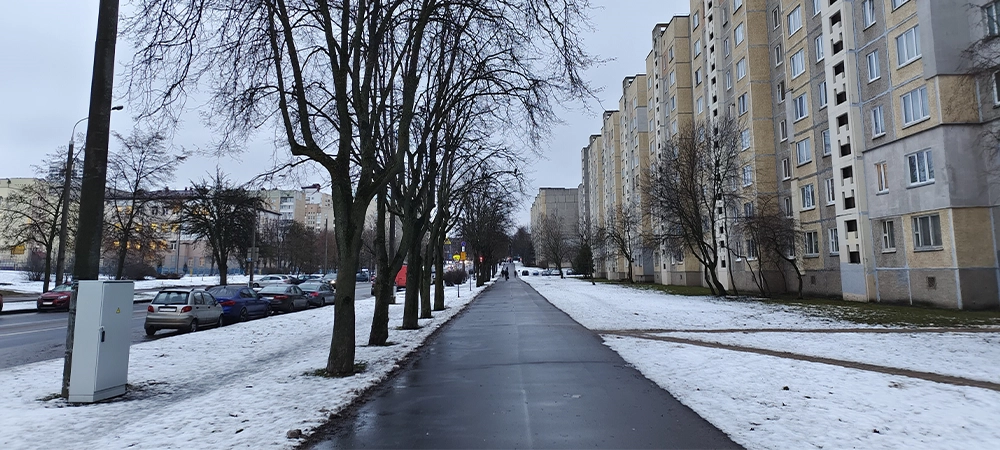
Why Professional Maintenance Matters
For commercial properties, managing snow and ice is about more than compliance. It is about reputation and safety. Customers who feel unsafe may avoid returning, and employees are more productive when they know their workplace is hazard-free.
Green Side Up Contracting in the Greater Toronto Area offers comprehensive winter maintenance for commercial properties, including snow removal, de-icing, and ongoing inspections. With professional help, businesses can reduce liability and create a safer environment all season long.
Related Article: How Snow Removal Services Help You Stay ADA Compliant in Winter
A Safer Approach to Winter Walkways
Ice accidents on commercial walkways are preventable. While liability depends on the circumstances, courts expect proactive maintenance and clear records. Property owners, managers, and contractors all play a role in ensuring safe access.
By investing in proper snow and ice management, businesses protect more than their bottom line; they protect the people who keep their operations running.
Don’t take chances with winter liability. Partner with Green Side Up Contracting for professional snow and ice management that keeps your walkways safe all season.
Frequently Asked Questions
1. What should I include in a winter maintenance plan for my business?
A strong plan outlines who is responsible, how often inspections occur, what de-icing materials are used, and how records will be kept.
2. Can tenants be fully responsible for walkway maintenance under a lease?
Yes, if the lease clearly states so. However, courts may still review whether the property owner oversaw compliance with safety standards.
3. Do different provinces in Canada have different liability rules?
Yes. While Ontario’s Occupiers’ Liability Act is specific to Ontario, other provinces have their own legislation. Businesses must review local laws.
4. What happens if an accident occurs during an active storm?
Courts usually recognize that conditions cannot be perfect during ongoing weather events. Reasonable measures, like salting during breaks, are expected.
5. How can businesses document snow removal effectively?
Use logs that include the date, time, weather conditions, work performed, and staff or contractor signatures. Some companies also use photo records.
6. Is black ice treated differently under liability laws?
No. Even though black ice is hard to see, property owners are expected to anticipate and treat it, especially when conditions favour its formation.
7. Can small businesses be sued even if the walkway was just missed once?
Yes. A single oversight can still result in liability if it leads to injury. Consistency is key in reducing risk.
8. Should businesses install heated walkways to reduce liability?
Not required, but heated walkways can reduce risk significantly in high-traffic areas. For some businesses, it’s a long-term investment in safety.


